So you may have slurped a Riesling recently and were thinking wow … “This is Rieeeesling GOOD”
Well why not consider taking a grape escape to the land where the lord of White wines hails from… where “Everything happens for a Riesling. Germany but before you start packing your socks and jox, making sure you have some space for a couple of bottles or 5… Let’s do some further winesplaing on why you need to try more Riesling.
The Riesling Renaissance
 Did you know back in the early 20th century, German riesling was regarded as a great gastronomic wine, commanding prices comparable to top priced Bordeaux? These wines, mostly slurped by the aristorical elite, were appreciated for the unique combination of low alcohol, fruity sweetness and perfectly balanced acidity. Apparently the queen’s favourite tipple is a bit of off-dry Riesling.
Did you know back in the early 20th century, German riesling was regarded as a great gastronomic wine, commanding prices comparable to top priced Bordeaux? These wines, mostly slurped by the aristorical elite, were appreciated for the unique combination of low alcohol, fruity sweetness and perfectly balanced acidity. Apparently the queen’s favourite tipple is a bit of off-dry Riesling.
But as times and the world changed sweetness went out of fashion especially as new world wine critics shifted to big OAK influenced and buttery whites. Germany’s favoured reputation and vineyards took a knock during WW2 and after that wine making went to commercial mass production and mostly local consumption at lower quality & price.
But today Riesling is having a moment again. Drinkers appreciate the lighter, medium body, more refreshing palate and versatility of Riesling especially as we crave more asian and nordic influenced foods. Also as more and more young winemakers are producing quality Riesling and nature is helping to provide more ripe grapes in higher yields suited for dry wines there is simply more Riesling left than the Germans can drink. Therefore, more cracking Riesling is available for export.
Why you need to try Riesling!
Riesling is one grape that has amazing diversity, history and dedicated supporters giving it its legendary status. Riesling is so diverse there are many winemakers in Germany that only focus on producing this one grape while being able to create a portfolio of stunning wines with a breadth of aroma / flavour, significance, and complexity.
It’s a grape that can be more difficult to grow and although has its challenges (fungus and reaching optimal ripeness) grows better in a cooler climate which the Germans have had to master since Roman times. Because of the cooler climate most grape varieties in Germany and especially Riesling will have a high acidity. This higher acidity is then magically paired with a longer, slower ripening time which allows for full flavour and aromatics to develop. While climate change has its impact on all of us it definitely has influenced Riesling over the past 6 or so years. Warmer conditions have helped boost yields with optimal ripeness. What does this mean… more awesome, balanced fruit forward Rieslings that everybody can enjoy.
 Taking it a step further, The best Rieslings come from the hands of winemakers who focus on single sites or “Grosse Lage” or “Grosse Gewachs” designated Grand Cru sites, some of which are 700 years old. These sites usually have older vines with deep roots and therefore reflect the soils they grew in to make wines with added terroir character. Great Rieslings from a single site are known to have distinct minerality and power. A Riesling will feel and taste different if it’s grown on harder, stone soils like slate vs softer limestone sand soils. Single Site or Grand Cru quality rieslings can age, and will get better with age creating round, richer, marmalade and earthy baked notes with long finishes and richness. The VDP is a German association of 202 winemakers committed to producing quality wines from single site vineyards.
Taking it a step further, The best Rieslings come from the hands of winemakers who focus on single sites or “Grosse Lage” or “Grosse Gewachs” designated Grand Cru sites, some of which are 700 years old. These sites usually have older vines with deep roots and therefore reflect the soils they grew in to make wines with added terroir character. Great Rieslings from a single site are known to have distinct minerality and power. A Riesling will feel and taste different if it’s grown on harder, stone soils like slate vs softer limestone sand soils. Single Site or Grand Cru quality rieslings can age, and will get better with age creating round, richer, marmalade and earthy baked notes with long finishes and richness. The VDP is a German association of 202 winemakers committed to producing quality wines from single site vineyards.
Today Most Riesling is produced and labelled Trocken (DRY in German) which under german law need to have < 9 residual sugar. Many of the best dry Riesling can be found in the Rhine Valley, Rheingau and Rheinhessen regions.
OK… So there are Dry Rieslings… But I heard a lot of Rieslings are Sweet and I don’t like sweet wines.
While sure there is plenty of sweet Riesling out there. And in the past a lot of cheap, low quality sweet Riesling were exported while the good stuff was slurped on German soil. And even if you think sweeter wines aren’t your thing… Well, we all love a bit of honey, grandma’s apricot jam or salted caramel from time to time. These reminiscent are all reminiscent of the surprise and delight that can be found in a late harvest Riesling.
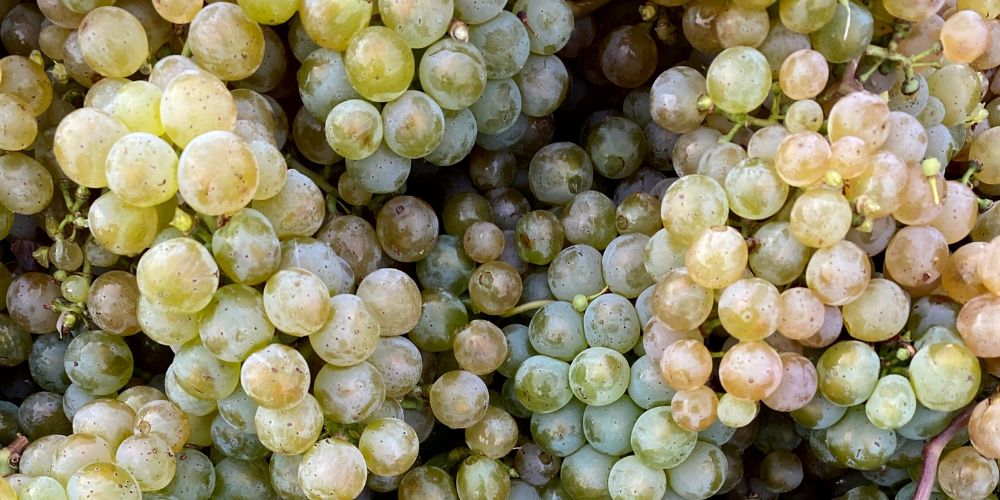 As mentioned Riesling has a long ripening time and because of the acidity grapes stay ripe longer. So there are actually 6 varieties or stages of late harvest Riesling to discover all with varying degrees of sugar levels. While to go into detail would lead to an entire new article it can be summarised as; going from a lighter, slightly fruitier but still off-dry wine to at the later end… A Riesling that is similar to a port, can be aged for 40+ years and is decadently sweet and syrupy as the juice is mechanically pressed from raisin like grapes.
As mentioned Riesling has a long ripening time and because of the acidity grapes stay ripe longer. So there are actually 6 varieties or stages of late harvest Riesling to discover all with varying degrees of sugar levels. While to go into detail would lead to an entire new article it can be summarised as; going from a lighter, slightly fruitier but still off-dry wine to at the later end… A Riesling that is similar to a port, can be aged for 40+ years and is decadently sweet and syrupy as the juice is mechanically pressed from raisin like grapes.
But even if you don’t usually like sweet wines what makes these wines different is they still have an acidic, juicy back bone. So while being more ripe and fruit forward they can still be refreshing and enjoyable because there is balance to the wine… like an alcoholic grape juice. And if you like spice, asian food and Riesling Kabinett (off dry – light and Fruity Fresh) or Spätlese ( very ripe, higher sugar, juicy, lower Alcohol) wines are a match made in heaven.
Where to take a grape escape to slurp great Riesling in Germany.
While Riesling can be found in most of the German wine regions it’s the hero grape in the Mosel and Rhine wine valley area of Rheingau, Rheinhessen (Nahe) and further south in the Pfalz.
One of Riesling’s most unique and celebrated qualities is its vibrant expression of terroir, commonly defined as “a sense of place.” In other words, certain elements of the soil and microclimate that the grapes are grown in are noticeable factors in the wine’s taste profile. This transparency of terroir means that Riesling grown in different regions will produce wines with markedly distinct characteristics.
“Riesling is grapes that’s character and charisma is truly reflective of its terroir (soil and climate) and with that the influence of stylistic traditions ensures that each region has a claim to fame on the king of white grapes”
Riesling and the Regions of Germany
The Mosel: Majestic river views hallmarked by some of the steepest vineyards as far as the eye can see is Germany’s largest producer of Riesling
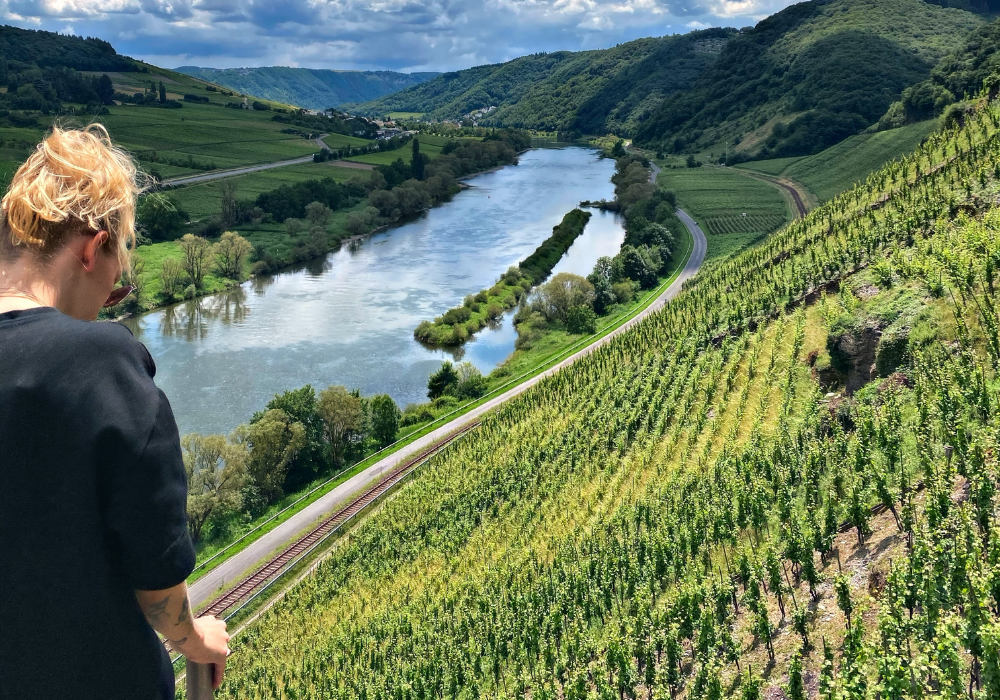 Riesling from the Mosel is legendary. The sites on steep slate-covered hills, in particular, bring forth Rieslings that number among the finest in the world. The Mosel is probably the most famous and oldest wine region of Germany if not the world. Nearly 2000 years of uninterrupted viticulture have created a unique bond between its natural and cultural landscapes.
Riesling from the Mosel is legendary. The sites on steep slate-covered hills, in particular, bring forth Rieslings that number among the finest in the world. The Mosel is probably the most famous and oldest wine region of Germany if not the world. Nearly 2000 years of uninterrupted viticulture have created a unique bond between its natural and cultural landscapes.
Along the serpentine route of the Mosel, the river banks rise sharply and the vineyards carpeting these slopes are among the steepest in the world. The best vineyards have an average slope at an astounding 60-70-degree gradient. On these precipitous inclines, nearly all labor must be done by hand. That includes tying each vine to its own wooden stake and carrying up the slate soil that has washed down with the winter rains. In the Mosel Riesling accounts for 92% of cultivation.
Unlike other regions where you will find a diversity of soils the Mosel is mostly a diversity of slate. Blue, grey with some iron rich red slate deposits. Therefore, the region produces a Riesling with its own distinctive personality. The fragrance is reminiscent of spring blossoms and peaches. Younger dry wines usually have a pale straw color, light body and a refreshing, fruity acidity. To add to their charm, they often have the slightest hint of effervescence. In more premium Riesling you get a sense of hot stone from the heat-reflecting slate that is mirrored in the wines. These wines will have mineral-rich and earthy, yet highly elegant, refined, complex aromas. They are wines of nearly infinite longevity.
In general expect to taste dry Riesling that is typically delicate and intensely mineral, partially from the slate soil it’s grown on. Young wines smell more fruity fresh with a bit of flint stone, and mature growths can show interesting petrol notes. While gasoline and wine may sound like an odd match, wine aficionados celebrate and seek out this quality in German Riesling! Conversely, also expect to try lighter fruity refreshing riesling to more syrupy decadently sweet late harvest Riesling all defined by a juicy acidic back bone.
Take a grape escape to the Mosel – Book today with Winerist.
The Rheingau: The burgundy of Germany, is a region nestled on the south facing valley between the Taunus Mountains and Rhein river 45km from Frankfurt.
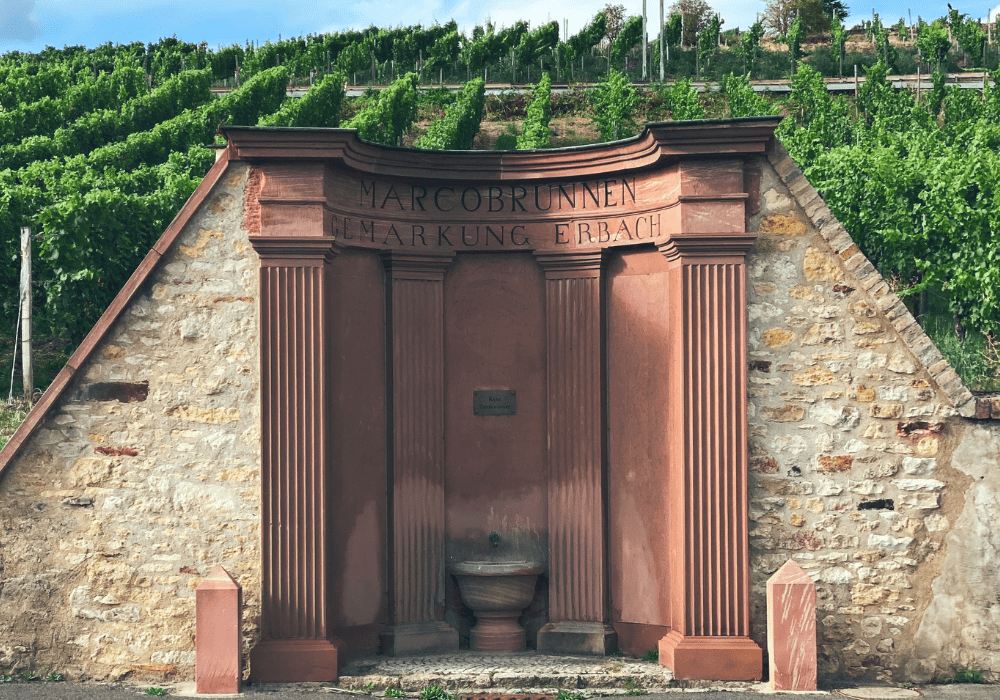 Rheingau is a beautiful region, rich in catholic traditions and noble estates. Early on, its medieval ecclesiastical and aristocratic wine-growers were associated with perfecting Riesling on first class sites. Then in the 18th century, they were credited for recognising the value of harvesting the crop at various stages of ripeness creating the Prädikate German quality system. Nearly 80% of its 7,700 acres are planted with Riesling – a record among wine regions worldwide. The region’s geological history is millions of years old, during which its diverse soils developed: quartzite and slate; loess; and gravelly, sandy, and clay sediments of the Mainz Basin, a prehistoric sea – soils that mark the terroirs in which Riesling thrives. In the end of the region famous steep slate vineyards are known for Riesling and also elegant world class Pinot Noir.
Rheingau is a beautiful region, rich in catholic traditions and noble estates. Early on, its medieval ecclesiastical and aristocratic wine-growers were associated with perfecting Riesling on first class sites. Then in the 18th century, they were credited for recognising the value of harvesting the crop at various stages of ripeness creating the Prädikate German quality system. Nearly 80% of its 7,700 acres are planted with Riesling – a record among wine regions worldwide. The region’s geological history is millions of years old, during which its diverse soils developed: quartzite and slate; loess; and gravelly, sandy, and clay sediments of the Mainz Basin, a prehistoric sea – soils that mark the terroirs in which Riesling thrives. In the end of the region famous steep slate vineyards are known for Riesling and also elegant world class Pinot Noir.
Rheingau Rieslings are generally a light golden colour and are known for their elegant, bone dry, and powerful zesty long finishes from many noble, established VDP winemakers (top producing estates). Rheingau Rieslings are very floral with citrus and apple notes and from the famous Johannisberg village sometimes have a spicy fragrance. But mostly Rhiengau Riesling almost always has a pronounced, crisp structured acidity. There are many acclaimed Riesling GG (Grand Cru Qualities) that either dry or lusciously sweet have long ageing potential and the finest fetch tremendous prices at auction.
Interested in visiting a vineyard owned by a Prince or going underground into a legendary vaulted cellar?
Rheinhessen & Rhein Valley: The land of a 1000 hills left behind by an ancient sea
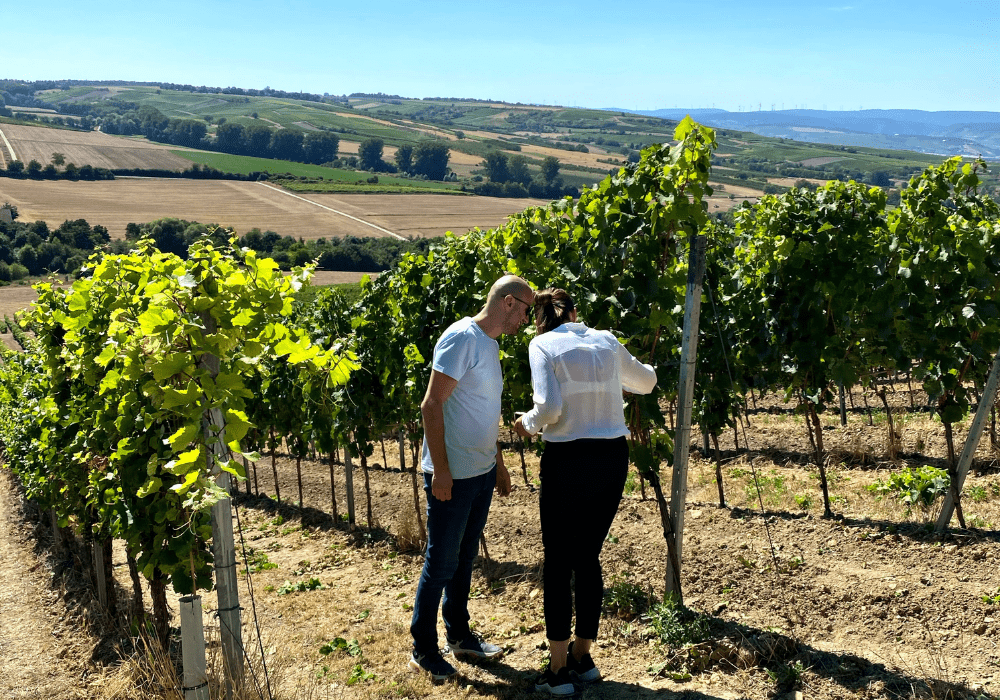 While vines are virtually a monoculture in the Rheingau or along the Mosel, they are but one of many crops that compete for the fertile soils of this region’s vast farmlands. With rolling vineyards as far as the eye can see the steepest vineyard sites are confined to small areas in the Rhein valley near Bingen, Nahe and south of Mainz along the RheinTerrasse of Nierstein.
While vines are virtually a monoculture in the Rheingau or along the Mosel, they are but one of many crops that compete for the fertile soils of this region’s vast farmlands. With rolling vineyards as far as the eye can see the steepest vineyard sites are confined to small areas in the Rhein valley near Bingen, Nahe and south of Mainz along the RheinTerrasse of Nierstein.
As Germany’s largest wine region there is a diversity of climates and soils types. Many of its famed wine villages celebrate the chalk, coral and limestone soils left behind from compact ancient reefs adding minerality and sometimes more balanced creamy acidity in wines. Rheinhessen is one of the most exciting wine regions with younger wine makers challenging traditions and focusing on different grape varieties and more natural, organic wine making. This new found energy is leading the way to make high quality Rieslings that can compete with their famed neighbouring regions sometimes at more accessible prices.
Rheinhessen Riesling are often characterised as being softer, more round, fruit-forward, medium-bodied with a more approachable mild acidity. They are pleasant, easy-to-drink wines. On ancient Rheinhessen coral limestone some of Germany’s best Riesling is produced where Riesling glows golden yellow in the glass. The delicate bouquet smells of fresh, ripe stone fruit. More distinctive than the fruit, however, are the mineral, salty notes of the wine and the dense, juicy harmonious acidity.
Discover Rheinhessen & Rhein Valley, the “Tuscany of Germany”, where castles sit majestically on cliff tops and vineyards roll steeply into the Rhein or explore Rheingau and Rheinhessen by visiting a mix of wineries.
Pfalz: The Tuscany of Germany
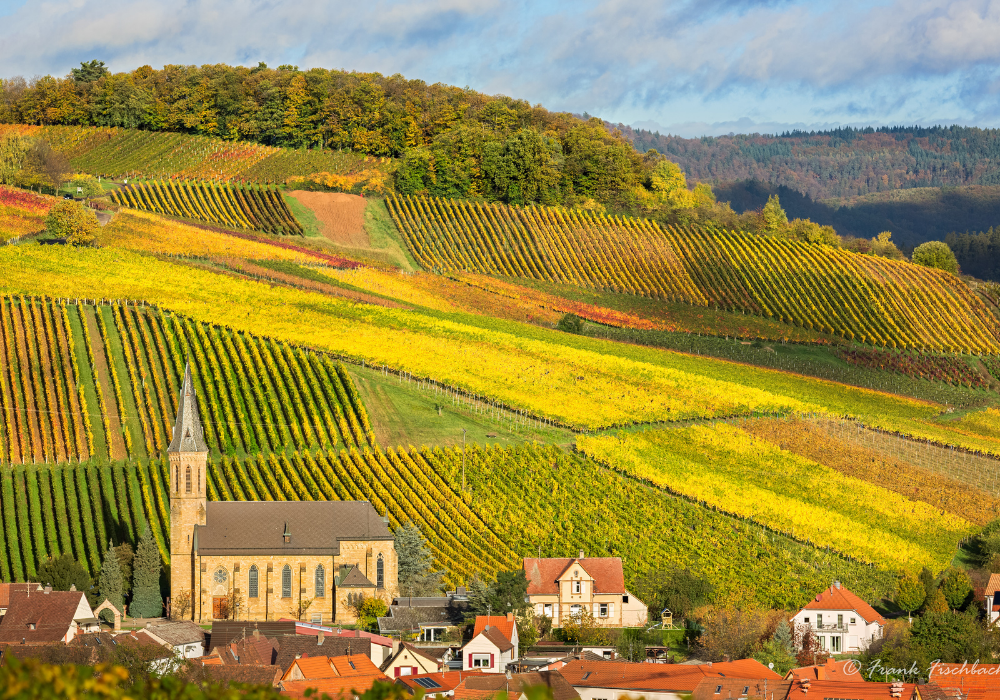 Bordered by Rheinhessen to the north and France on the south / Sth west the Pfalz contains some of Germany’s warmest vineyards. This remarkably pretty wine region was the first region to really embrace wine tourism with its famed Deutsche Weinstraße – German Wine route. Visitors following the 85km wine route from the French border at Schweigen to Bockenheim will enjoy an endless sea of vines and quaint villages. The pastoral roads are guided by fruit trees, old walled villages with terracotta roofed, half-timbered houses and of course plenty of wineries to taste the region. All this set against the more prominent tree-covered Haardt mountain range which is dotted by historic castle ruins.
Bordered by Rheinhessen to the north and France on the south / Sth west the Pfalz contains some of Germany’s warmest vineyards. This remarkably pretty wine region was the first region to really embrace wine tourism with its famed Deutsche Weinstraße – German Wine route. Visitors following the 85km wine route from the French border at Schweigen to Bockenheim will enjoy an endless sea of vines and quaint villages. The pastoral roads are guided by fruit trees, old walled villages with terracotta roofed, half-timbered houses and of course plenty of wineries to taste the region. All this set against the more prominent tree-covered Haardt mountain range which is dotted by historic castle ruins.
The Pfalz is second only to the Mosel in acreage planted with the noble Riesling grape. Here, it yields wines of substance and finesse, with a less austere acidity than their Mosel counterparts. Beyond some of the most famed red wines of Germany one out of four vines in the Pfalz is Riesling, which is also the most important variety for VDP estates. The Rhine plain between the foothills of the Haardt and the river provides optimal conditions for grapes, thanks to its geological diversity: weathered coloured sandstone, slate, basalt, shell-limestone, and Rotliegend (volcanic red sandstone) that each lend a distinctive note to rieslings which generally have a fuller body, sometimes creamier, rounder balanced acidity with with more orchard fruit. On volcanic red soils, Rieslings are more tropical with a bit of tangy spice.
Take a grape escape to the Pfalz – Book today with Winerist.
Has all this made you thirsty? If so, now you have a good Riesling to take a Grape Escape to Germany. On tour we will discover Riesling in all its glory from smaller producers to critically acclaimed as we cruise through the vineyards to see the vines and admire their grape views. There will also be a chance to swirl, sniff and slurp many other amazing wine varieties beyond Riesling. I promise that after a day slurping many wines with me you will be more experienced and most likely big fans of German wine & Riesling! Zum Wohl – German for “To good health”
